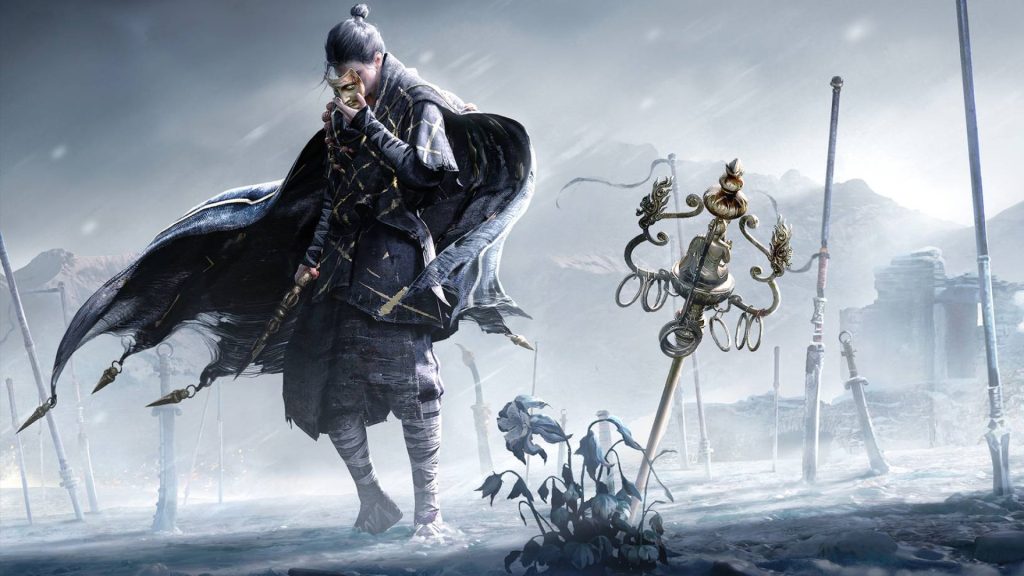I‘ve always been a fan of games that let me take on opponents in a test of skill, and the action adventure genre has given me a few lovely ones over the years. From the skillful parrying-based system in Sekiro: Shadows Die Twice to Ghost of Yotei’s unique system of switching your moveset on the fly, getting up close and personal with a worthy adversary has never been as good as it currently is.
But then, there’s Where Winds Meet. Everstone Studio’s effort to put its players in the shoes of a wandering swordsman looking to make their mark on a changing world brings wuxia into the mix, and its weapon variety and sheer amount of cool moves has me quite eager to begin a playthrough.
It’s time to take a closer look at a combat system that might just be the best one I’ve played yet. Let’s get started.
Smooth, Stylish, Sublime

The idea of a wuxia-based combat system and its potential success first caught my eye when I learned about Phantom Blade Zero. And while I’ve previously praised that one for its excellent design and potentially great combat, I think that Where Winds Meet deserves a lot of praise based on my early impressions.
For starters, it’s well-placed from a narrative perspective, allowing the game’s combat to fit perfectly with the overall theme and the adventure’s premise. The wuxia animations, accurate weapon types, smooth movement, and a very agile character make for a combat experience that looks as polished as it feels.
Bring in Mystic Arts and weapon skills and this one’s already showing a lot of potential for some very unique builds coming up post release. But while any title can throw a lot of cool moves and a few mechanics together, Where Winds Meet brings them all together into an experience that feels like an absolute power trip.
You’re diving into a furious dance in which your opponent does put up a fair fight for the most part, with tougher opponents being able to shift the battle’s momentum in their favor almost at a whim. The game’s enemies push you just hard enough to keep things exciting while easier difficulties add a layer of leniency to an otherwise tight window for dodges and parries.
That feeling of danger in battle coupled with the ability to switch to your second weapon on the fly can lead to a lot of interesting combinations that are used quite creatively by players who discover unique ways to bring their builds into the spotlight.
But how does Where Winds Meet manage to generate that sense of tension and build variety? Read on!
A World That Encourages Improvement
While it may be easy to write off Where Winds Meet’s combat system owing to the fact that there are only seven weapon types on offer, Everstone deserves credit for making each one look, feel, and play quite differently. Moreover, the launch weapons are a curated set with motion-captured animations that give each weapon a distinct identity.
That identity goes beyond just visuals and animations, as each weapon comes with its own strengths, weaknesses, and special moves that allow every player a combat option that matches their playstyle and perhaps an alternative that either complements their choice, or pushes their boundaries if they choose to take on a more challenging one.
Take the sword, for instance. Its shorter reach belies a penchant for incredibly damaging counterattacks for those of you who approach fights with finesse and precision. It’s the perfect companion for wanderers who prefer parry-focused palystyles, expertly deflecting attacks to put your opponents off balance and vulnerable to your swift slashes and the Shadow Step is amazing when you’re in a pinch.
The dual blades take the aggression up a notch and are brilliant in the hands of those who like to weave in and out of the fray, setting elemental statuses and stacking up critical damage in the process. Their fast, slashing attacks are a sight to behold while the Malevolent Mark and Bitter Fate skills are perfect as options to offset the blade’s low damaging strikes.
The spear is versatile and rapid, granting access to some excellent crowd control abilities while its reach lets you use spacing to your advantage in a fight. Its skills allow you to unleash a rapid barrage of strikes by twirling the spear, a move that could come with potential for immense damage if you build around recurring hits.
The glaive’s long range and wide attack arcs are also quite effective for crowd control but it sets itself apart from the spear thanks to its heft and potential for some incredible damage. It’s just what wanderers who like to hit first and ask questions later would want, and its utility against armored enemies is sure to make anyone sit up and take notice of it.
But of course, these are all weapons we’ve seen in some form or the other over the years. That’s where the rope dart, fans, and combat umbrellas come in. They’re all so distinctive and quite refreshing, focusing on either combat, support, or defense based on the weapon and the way it’s being used.
The rope dart, for instance, was almost perfect when used with the dual blades, allowing me to seamlessly stay on the attack no matter where I was in the field. Tearing through enemy crowds felt almost effortless when the game’s basics and each weapon’s timing fell into place, and the sheer potential for unique warriors with a lot of different tricks up their sleeve makes Where WInds Meet a very interesting game on the combat front.
The Flow of a Fight

The best combat games I’ve played often made fights feel like a battle for momentum, your character either turning the enemy’s attacks against them via clever positioning or well-timed parries while making the most out of seemingly disparate systems to create an advantage.
In Where Winds Meet, mystic and internal arts can work very well alongside martial arts to create the potential for characters that have a variety of moves at their disposal. From redirection techniques like taichi that let you reflect the enemy’s attack back at them to elemental attacks that let you harness nature in your fight for glory, the sheer variety of arts that you either discover or learn from masters whose strongholds you infiltrate is astounding.
It further underscores the build variety that could arise from this game while also adding a layer of strategy to the combat system, as you need to be tactical about when to use your arts to get the most out of them.
By ensuring that mystic and internal arts require you to be careful about conserving or using them, Where Winds Meet has baked a sort of balance into its combat system, ensuring that skilled players continue to enjoy its combat while newcomers have a lot to discover and engage with.
The fact that stealth is also an option, with a few arts allowing you to truly sneak around enemy-controlled spaces while allowing you to strike from the shadows is another feather in the game’s cap. It isn’t hard to picture a few players becoming rogues who are as deadly up close as they are from unseen places on the battlefield. Once again, it’s a sense of creative expression that future titles in this genre might find hard to emulate.
When you factor in the Qinggong-styled movements and the layer of mobility they bring to your character, it’s easy to see why this one has me so excited to dive in.
Worthy Adversaries

Of course, even the best combat systems could fall flat if the enemies you’re wielding your skills against are not up to the task of challenging you. Thankfully, that’s not the case with Where Winds Meet, and both basic enemies and bosses come at you with attacks and animations that you must learn in order to be effective against them.
Bandits or human enemies bring the potential for some fun duels to the table while elite martial artists could be forced to fight with both brain and brawn. There are also ranged enemies and even vicious beasts and giant creatures that could test your ability to posture-break an opponent quite well.
I’m especially excited about the parry system as it’s my playstyle of preference and it’s looking like a very well-tuned mechanic from what I can tell. I wonder what a parry-focused build could do at higher difficulties, and how the lower end of the difficulty spectrum could tweak timings and windows to make things easier for players who are more worried about the story.
Overall, the combat in Where Winds Meet has me itching to dive into its excellent presentation and deep mechanics. I just can’t wait to discover new builds, gear, moves, and different ways to defeat even the most challenging adversaries. To have those fights framed by a story that could be as interesting as the combat is just icing on the cake.
If only the next few days could go any faster.
Note: The views expressed in this article are those of the author and do not necessarily represent the views of, and should not be attributed to, GamingBolt as an organization.


